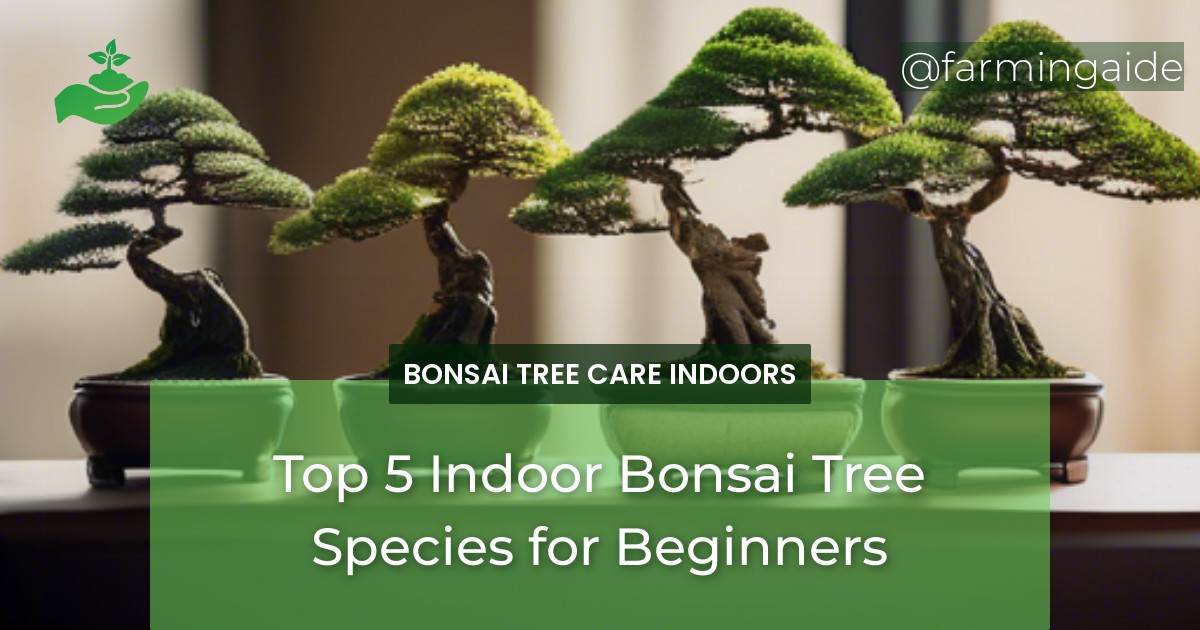Embarking on the fascinating world of indoor bonsai trees can be a rewarding and calming experience, especially for beginners. With the right guidance, you can create a serene and peaceful atmosphere in your home or office. In this article, we will delve into the top 5 indoor bonsai tree species perfect for beginners, as well as provide valuable insights on how to care for your new miniature tree friend.
Key Takeaways
- Discover the top 5 indoor bonsai tree species suitable for beginners
- Learn the benefits of indoor bonsai trees and how to choose the right species for you
- Understand the basic care guidelines and common challenges for indoor bonsai trees
- Get started with confidence and create a thriving indoor bonsai tree
- Further resources and learning opportunities for continued growth
Introduction to Indoor Bonsai
Indoor bonsai trees have become increasingly popular in recent years, and for good reason. These miniature trees bring a touch of nature indoors, promoting relaxation and reducing stress. However, many beginners are unsure where to start or which species to choose. In this article, we will explore the top 5 indoor bonsai tree species perfect for beginners, as well as provide valuable insights on how to care for your new miniature tree friend.
What is Bonsai?
Bonsai, which translates to “tray planting” in Japanese, is the art of growing trees in containers. This ancient practice originated in China and Japan, where trees were cultivated in pots to create stunning, miniature masterpieces. Today, bonsai trees are enjoyed worldwide, with indoor species being particularly popular.
Benefits of Indoor Bonsai
Indoor bonsai trees offer numerous benefits, including air purification, stress reduction, and aesthetic appeal. They also make great conversation starters and can even improve focus and productivity. With the right care, indoor bonsai trees can thrive and become a beloved addition to your home or office.
Choosing the Right Bonsai Species
With so many species to choose from, selecting the right indoor bonsai tree can be overwhelming. However, by considering a few key factors, you can find the perfect tree for your lifestyle and environment.
ALSO READ
Factors to Consider for Beginners
When selecting an indoor bonsai species, consider the following factors:
- Climate and temperature
- Lighting requirements
- Watering needs
- Maintenance and pruning
- Pest and disease resistance
Overview of Suitable Species
For beginners, it’s essential to choose species that are easy to care for and forgiving. Look for species that are adaptable to indoor conditions and require minimal maintenance. The top 5 indoor bonsai tree species for beginners are:
Top 5 Indoor Bonsai Species for Beginners
ALSO READ
Ficus Retusa
Ficus Retusa, also known as the Banyan Fig, is a popular choice for indoor bonsai beginners. This species is adaptable to low light conditions and can thrive in temperatures between 65°F to 75°F (18°C to 24°C).
Basic Care Guidelines:
- Watering: Water thoroughly, allowing soil to dry slightly between waterings
- Lighting: Low to medium light
- Temperature: 65°F to 75°F (18°C to 24°C)
Serissa Foetida
Serissa Foetida, also known as the Snow Rose, is a low-maintenance species perfect for indoor bonsai beginners. This species prefers bright, indirect light and temperatures between 65°F to 75°F (18°C to 24°C).
Basic Care Guidelines:
- Watering: Water thoroughly, allowing soil to dry slightly between waterings
- Lighting: Bright, indirect light
- Temperature: 65°F to 75°F (18°C to 24°C)
Chinese Elm
Chinese Elm, also known as Ulmus Parvifolia, is a hardy species suitable for indoor bonsai beginners. This species prefers well-draining soil and temperatures between 65°F to 75°F (18°C to 24°C).
Basic Care Guidelines:
- Watering: Water thoroughly, allowing soil to dry slightly between waterings
- Lighting: Medium to bright light
- Temperature: 65°F to 75°F (18°C to 24°C)
Dwarf Jade
Dwarf Jade, also known as Portulacaria Afra, is a low-maintenance species perfect for indoor bonsai beginners. This species prefers well-draining soil and temperatures between 65°F to 75°F (18°C to 24°C).
Basic Care Guidelines:
- Watering: Water sparingly, allowing soil to dry completely between waterings
- Lighting: Bright, indirect light
- Temperature: 65°F to 75°F (18°C to 24°C)
Fukien Tea Tree
Fukien Tea Tree, also known as Carmona Retusa, is a popular choice for indoor bonsai beginners. This species prefers well-draining soil and temperatures between 65°F to 75°F (18°C to 24°C).
Basic Care Guidelines:
- Watering: Water thoroughly, allowing soil to dry slightly between waterings
- Lighting: Medium to bright light
- Temperature: 65°F to 75°F (18°C to 24°C)
Caring for Your Indoor Bonsai
To ensure your indoor bonsai tree thrives, it’s essential to understand the basic care guidelines and common challenges.
Basic Care Guidelines
General care guidelines for indoor bonsai trees include:
- Watering: Water thoroughly, allowing soil to dry slightly between waterings
- Lighting: Provide sufficient light, depending on the species
- Temperature: Maintain a consistent temperature between 65°F to 75°F (18°C to 24°C)
- Fertilization: Fertilize sparingly, using a balanced fertilizer
- Pruning: Prune regularly to maintain shape and promote healthy growth
Common Challenges and Solutions
Common challenges for indoor bonsai trees include:
- Pests: Check for pests regularly, and treat promptly if necessary
- Diseases: Inspect your tree regularly for signs of disease, and treat promptly if necessary
- Over-watering: Avoid over-watering, as this can lead to root rot and other issues
- Under-watering: Monitor your tree’s watering needs, and adjust as necessary
Conclusion: Your Journey with Indoor Bonsai
Embarking on the journey of indoor bonsai trees can be a rewarding and calming experience. By choosing the right species for your lifestyle and environment, and understanding the basic care guidelines and common challenges, you can create a thriving indoor bonsai tree.
Encouragement for Beginners
Remember, caring for an indoor bonsai tree takes patience, dedication, and practice. Don’t be discouraged by setbacks or mistakes – they are an opportunity to learn and grow.
Further Resources and Learning
Continue to learn and grow with your indoor bonsai tree by exploring further resources, including online tutorials, books, and local bonsai clubs.


